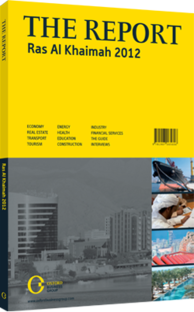
The Report
This article is from the The Guide chapter of The Report: Ras Al Khaimah 2012. Explore other chapters from this report.
The area that now makes up present-day Ras Al Khaimah was historically a popular target for invaders due to the emirate’s strategic location at the entrance of the Gulf. This maritime potential made RAK an important shipping point throughout the ages. Indeed, RAK drew military challenges from not only Islamic clans in the Gulf, but also imperial powers such as the Sassanid, Dutch, Portuguese and British Empires.
THE HIGH GROUND: Known for much of its existence as Julfar, RAK is home to almost 20 historical defence structures, according to the Ras Al Khaimah Tourism and Development Authority. Several are of notable significance. Dhayah Fort was first built in the 1500s and is the sole castle on top of a mountainous hill several kilometres north of RAK City. Accessible by a concrete stairway, Dhayah Fort is an important tourist destination in the UAE, with thousands of sightseers visiting the structure every year. The castle was restored in 2001, and a rest house was built nearby for tourists.
Although little remains of the 16th-century structure, the fort was added in the 1800s, and remnants of the original foundation can still be seen today. The castle, as it stands now, is made up of two small towers connected by an outer wall. One notable feature is the lack of water cisterns. This indicates that the fort was used for short periods of time, rather than lengthy siege situations. The remains of other defensive structures can also be seen near Dhayah Fort. Ruins of what was once a large fort built out of mud bricks are located at the base of the hill. The structure was used as a refuge for farmers when under attack. Remnants of several watchtowers, built to protect palm gardens, can also be found near the foot of the hill.
BRITISH INVASION: Perhaps the most important event involving Dhayah Fort was the British invasion of RAK in the early 1800s. Hostility between the British Empire and the Qawasim, a local tribe in the area and the ancestors of RAK and Sharjah’s current rulers, began in 1797. The Qawasim had built up a powerful naval fleet by the turn of the century, which they were using to slowly gain control over significant portions of the Gulf. The British, meanwhile, were becoming a dominant naval power in the Indian Ocean and felt threatened by the Qawasim fleet. Hostilities reached a head in 1819 when the British sent a large force to RAK. After an assault on the city of RAK, the British moved north to the village of Rams, where the town’s inhabitants had fled to seek refuge in Dhayah Fort.
On December 22, 1819, the British hauled cannons more than 5 km over swampland and attacked the fort. Its defenders eventually surrendered, but not before putting up a good fight under the leadership of Sheikh Hassan bin Ali. Several weeks after the battle, a treaty was signed between the British and the local sheikhs. The agreement marked a period of peaceful relations between the tribes and the British Empire, and British occupation of RAK ended the next year.
A LASTING LEGACY: Although historians agree that Dhayah Fort was built for defensive purposes, the structure’s historical significance transcends military affairs. The local ruling family used Dhayah Fort as a residence for a number of years until 1964, and the castle later served as a prison until 1984.
The fort has also been a beneficial excavation site for archaeologists. Numerous pieces of jewellery have been found, some of which were crafted out of a blend of silver and gold called electrum. An earring, known as the “Golden Dalayah”, was one of the more important discoveries at the site. Archaeologists uncovered additional valuable artefacts in 1988 in a large graveyard at the base of the fort.
Due to the region’s unforgiving climate, may historical structures in the UAE’s northernmost emirate have not survived. This is regrettable, as the emirate has a rich and extensive history. Civilisation in RAK dates back to 5000 BC, which puts the emirate in an elite club as one of the only spots on the globe to be continuously inhabited for more than seven millennia. Fortunately, sites like Dhayah Fort have remained intact and continue to provide a glimpse of the emirate’s past.
You have reached the limit of premium articles you can view for free.
Choose from the options below to purchase print or digital editions of our Reports. You can also purchase a website subscription giving you unlimited access to all of our Reports online for 12 months.
If you have already purchased this Report or have a website subscription, please login to continue.
| Chapter overview View the The Guide chapter overview, from The Report: Ras Al Khaimah 2012 | Next chapter from this report Table of Contents, from The Report: Ras Al Khaimah 2012 |

This article is from the The Guide chapter of The Report: Ras Al Khaimah 2012. Explore other chapters from this report.
Explore any of the chapters below to select an article.
Stay updated on how some of the world’s most promising markets are being affected by the Covid-19 pandemic, and what actions governments and private businesses are taking to mitigate challenges and ensure their long-term growth story continues.
Register now and also receive a complimentary 2-month licence to the OBG Research Terminal.
Register Here×